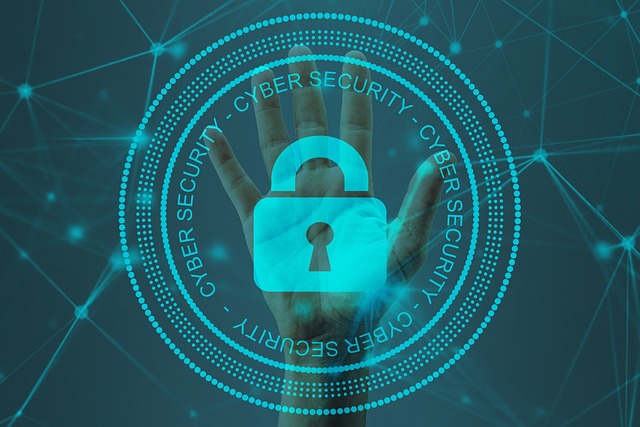As the digital world expands, so do the threats that loom over it. Attack surfaces are growing as businesses scale digitally, and cybercriminals are becoming more sophisticated.
Where does AI fit into this, and at what level can it bring impact in cybersecurity?
It’s a question that goes beyond surface-level discussions, diving deep into the very core of how businesses, governments, and individuals protect their most valuable digital assets.
AI’s Role in Modern Cybersecurity
The goal of Cybersecurity services is not only to respond to threats, but also to prevent them from occurring in the first place.AI is the force behind this shift, enabling anomaly detection, real-time monitoring, and the ability to sift through vast amounts of data that humans cannot process fast enough.
AI-Powered Threat Detection
With AI in cybersecurity, organizations can analyze user behavior, network traffic, and historical data to detect unusual patterns that could indicate a breach. Through machine learning algorithms, AI continuously learns from new data to evolve its understanding of what constitutes a threat. This predictive analysis offers a major advantage—AI threat detection tools can identify potential risks well before they escalate into full-blown attacks.
According to Cybersecurity Ventures, global cybercrime is expected to reach $10.5 trillion by 2025. Without AI, it would be nearly impossible for security teams to keep up with increasing threats. AI’s ability to automate detection, response, and mitigation tasks transforms cybersecurity from a reactive to a proactive discipline.
The Advantages of AI in Cybersecurity
The benefits of AI in cybersecurity extend into every facet of modern security strategies:
24/7 Vigilance and Automated Response
AI never sleeps, which means businesses have round-the-clock protection. Automated systems powered by AI can respond to threats in real-time, often within milliseconds. Unlike human-driven processes, AI-driven systems can act immediately, reducing the time between detection and response to mitigate damage.
Predictive Threat Analysis
AI’s true power lies in its predictive capabilities. By analyzing old data and patterns, AI can predict the likelihood of an attack and identify vulnerabilities in a system beforehand. A report by IBM states that companies using AI-driven cybersecurity tools saw a $3.81 million reduction in data breach costs due to AI’s ability to enhance detection and response efforts.
Reducing Human Error
Human error remains one main contributor to security breaches, whether it’s through misconfigurations, missed alerts, or phishing attacks. AI helps eliminate this vulnerability by automating mundane tasks such as scanning for vulnerabilities, conducting routine security checks, and filtering out phishing attempts. It increases accuracy and allows security teams to focus on higher-level tasks.
The Challenges AI Introduces in Cybersecurity
As AI becomes more embedded in defense systems, the challenges of AI in cybersecurity become clearer.
False Positives and Negatives
Despite its capabilities, AI can make mistakes. False positives—alerts triggered by benign activities—can flood security teams with unnecessary alerts, leading to alert fatigue. On the flip side, false negatives—when AI misses a real threat—can leave organizations vulnerable. A study by McKinsey found that 45% of cybersecurity professionals believe AI tools need human oversight to minimize these risks.
Data Dependency and Bias
Poor-quality data or biased datasets can skew AI’s decision-making capabilities, causing it to overlook emerging threats or misclassify benign activity as malicious. It poses a significant risk, particularly when organizations rely heavily on AI to make critical security decisions.
High Costs and Skill Gaps
Implementing AI-based solutions is expensive. Organizations need to invest in cutting-edge AI tools and also in the talent required to manage and interpret the results. Small to mid-sized businesses often find it challenging to allocate the necessary resources for full-scale AI deployment, leaving them potentially exposed.
AI-Powered Cyber Attacks are a Growing Concern
While AI strengthens defense mechanisms, it also equips cybercriminals with more sophisticated attack tools. Hackers are increasingly leveraging AI-powered attacks to create advanced malware, spear-phishing campaigns, and automated attacks that evolve in real-time.
AI-Driven Malware
Malicious actors are using AI to develop self-learning malware that can adapt to the environment it infects. This malware can change its code to evade detection, making traditional signature-based defenses ineffective. It’s predicted that by 2025, AI-driven attacks will become the norm, demanding organizations reconsider how they approach security.
AI vs. AI
As the race between cybercriminals and security professionals intensifies, we’re seeing the rise of AI vs. AI scenarios. In these cases, both sides deploy AI to outwit each other, creating a game of cat-and-mouse. Attackers use AI to find weaknesses in AI-driven defenses, while cybersecurity teams refine their AI systems to counter these increasingly intelligent threats.
What does AI’ Future in Cybersecurity look like?
Moving forward, businesses will need to strike a balance between AI automation and human oversight. The question is not whether AI will be part of cybersecurity strategies—it already is—but how well businesses can adapt to the modern cybersecurity challenges it introduces.
The Rise of Autonomous Systems
Autonomous AI systems capable of responding to threats with little to no human intervention will be a game-changer. These systems can not only detect and mitigate attacks but also learn from them, continuously improving without human input. As businesses move toward more autonomous cybersecurity, the focus will shift to developing trust in these systems while ensuring they don’t compromise on accuracy.
AI and Collaboration
Looking ahead, AI will likely foster more collaborative efforts between industries and governments to counter cybercrime. Shared AI models and data could lead to global threat intelligence platforms that provide real-time updates on emerging threats across sectors.
Preparing for AI’s Future in Cybersecurity
The future of cybersecurity lies in how well businesses can use AI to its fullest without becoming overly dependent on it. Now is the time to evaluate your security strategy—are you prepared for the AI-driven future of cybersecurity?
iOPEX Technologies guides enterprises through transformative changes in cybersecurity by leveraging advanced technologies that redefine and enhance security measures and governance. With GenAI capabilities, round-the-clock expert support, and thorough root cause analysis, we strengthen cyber security, building efficient, adaptable, and resilient business environments.
Improve your cyber security posture by seamlessly integrating security into your business, operations, and people. Visit iOPEX Technologies today to learn more and connect with a cybersecurity expert.


